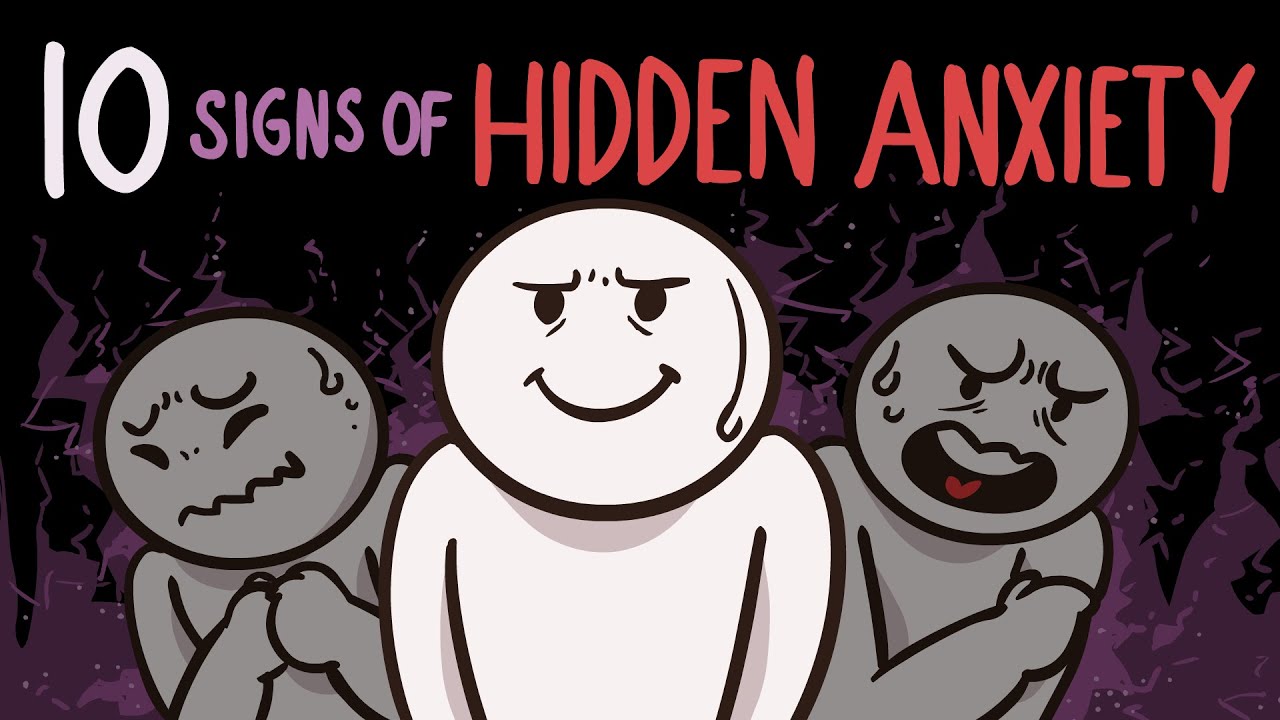10 Signs of Hidden Anxiety
Hidden anxiety is not actually a clinical term. Hidden anxiety refers more to symptoms of anxiety that are underlooked in the DSM. The purpose of this video is to raise awareness on less common signs of anxiety that people may not notice. Someone with or without an official diagnosis of anxiety disorder may still experience these symptoms. Do you have a friend or know someone who may be experiencing signs of anxiety that are hard to pick up?
Disclaimer: Do not use this video to self diagnose yourself or someone else. To receive a proper diagnosis, a professional is recommended. You can, however, use this video as a guide when explaining your symptoms to your doctors.
According to the American Psychological Association, people with anxiety have a future-oriented fear which leads them to avoid anything that could potentially trigger a stress response. In 2017, the National Institute of Mental Health reported that approximately 40 million people worldwide suffer from anxiety.
Anxiety disorders are highly treatable, but recent surveys show that only 36.9% of those suffering from it seek treatment. This might be because most people with anxiety worry about the judgment of others and how the stigma against mental illness might negatively affect their lives.
Does this sound familiar to you?
Suggested playlist:
Credits
Writer: Chloe Avenasa
Script Editor: Kelly Soong & Gabrielle LaFrank
VO: Amanda Silvera
Animator: Winshard (Talented animator: https://www.youtube.com/user/NathanShawnRockheart/videos)
YouTube Manager: Cindy Cheong
References:
American Psychological Association (2013). Diagnostic and Statistical Manual of Mental Disorders, 5th Washington, DC, USA; APA Publishing.
National Institute of Mental Health (2017). What Are Anxiety Disorders? Retrieved from www.nimh.nih.gov/health/statistics/anxiety-disorders.shtml
National Alliance Against Mental Illness (2018). Mental Health by The Numbers. Retrieved from www.nami.org/learn-more/mental-health-by-the-numbers
Calvo, M. G., Gutiérrez, A., & Fernández-Martín, A. (2012). Anxiety and deficient inhibition of threat distractors: Spatial attention span and time course. Journal of cognitive psychology, 24(1), 66-78.
Bowen, R., Clark, M., & Baetz, M. (2004). Mood swings in patients with anxiety disorders compared with normal controls. Journal of affective disorders, 78(3), 185-192.
Steer, R. A., & Beck, A. T. (1997). Beck Anxiety Inventory.
Do you want to see more videos like this one? If so, send us an email to editorial@psych2go.net with more of your suggestions! Also, favour needed. Could you help share our videos on your social media if you found them helpful? Thanks!




![[ID: DGNoyjkJG-I] Youtube Automatic](https://okumasaati.net/wp-content/uploads/2020/10/id-dgnoyjkjg-i-youtube-automatic-360x203.jpg)
![[ID: HqY8NRZePSI] Youtube Automatic](https://okumasaati.net/wp-content/uploads/2020/10/id-hqy8nrzepsi-youtube-automatic-360x203.jpg)
![[ID: _ulhxX_tnqY] Youtube Automatic](https://okumasaati.net/wp-content/uploads/2020/10/id-ulhxxtnqy-youtube-automatic-360x203.jpg)
![[ID: YLIGUMNrNYU] Youtube Automatic](https://okumasaati.net/wp-content/uploads/2020/10/id-yligumnrnyu-youtube-automatic-360x203.jpg)
![[ID: 5JVVhKP9XP4] Youtube Automatic](https://okumasaati.net/wp-content/uploads/2020/10/id-5jvvhkp9xp4-youtube-automatic-360x203.jpg)
![[ID: i5mUrQ5fHbs] Youtube Automatic](https://okumasaati.net/wp-content/uploads/2020/10/id-i5murq5fhbs-youtube-automatic-360x203.jpg)